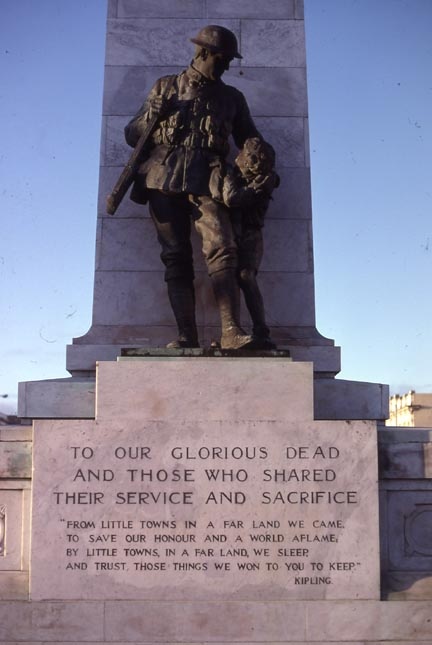
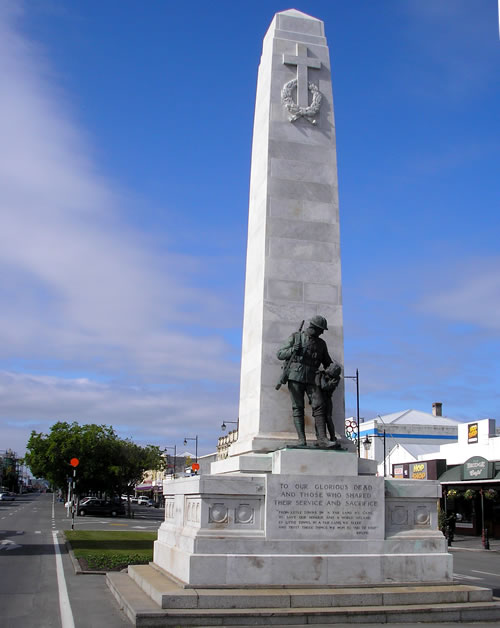
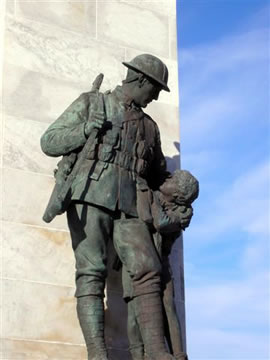
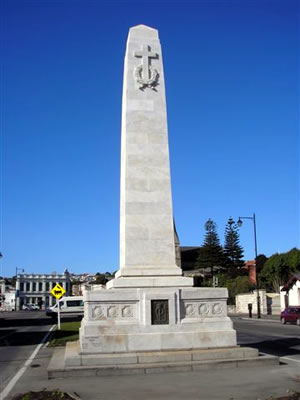
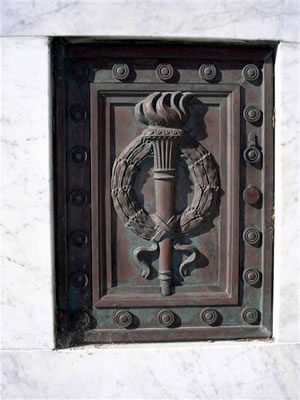
Against the backdrop pf a 13-metre tall tapering column of Sicilian marble (set on a base of granite), T.J. Clappteron's bronze soldier consoles a small child (who symbolises the ideas of humanity for which the war was believed to have been fought). E. Miller was the memorial's designer.
North Otago people fought their own battles over this memorial. For months they argued whether it should be utilitarian or inspirational. Then they argued about where it should be placed. Even more vigorously, they argued about whether it should carry the names of the fallen.
Governor-General Jellicoe laid the foundation stone on 14 October 1924. On Anzac Day 1926, Lieutenant-Colonel J. Hargest unveiled the memorial and placed in a locked receptacle a bronze casket containing the names of the district's soldiers who had served overseas.
Gavin McLean, November 2008
| Site | Style | Ornamentation | Unveiling Date | No of Dead |
| Intersection | Square obelisk | Cross, wreath, soldier |
25-Apr-1926 | 0 |

Community contributions